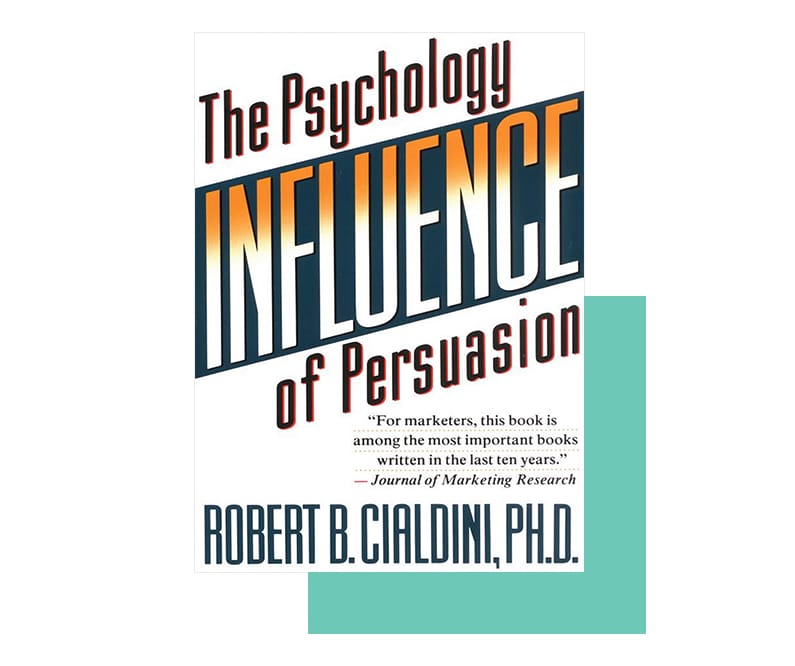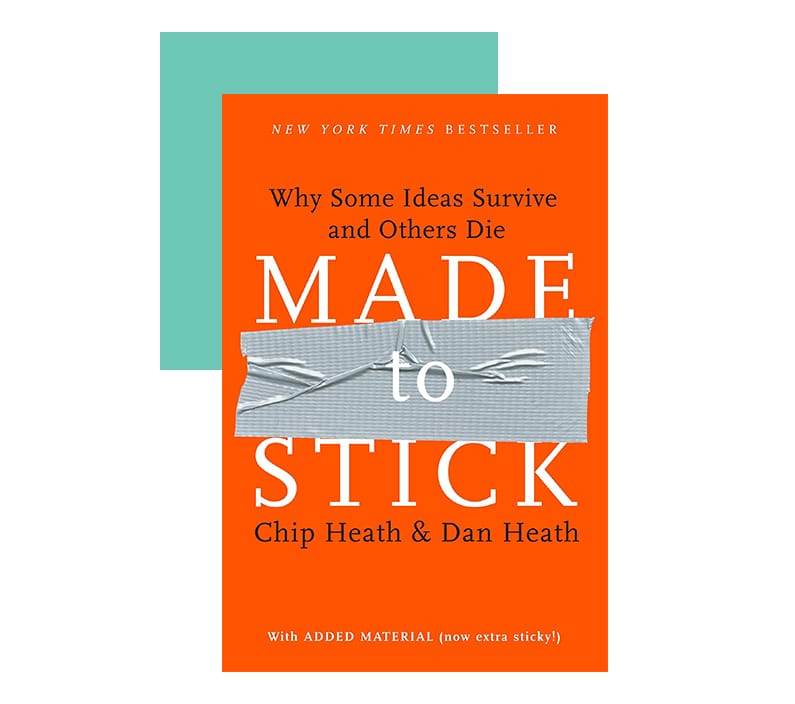You need to know why ideas gain traction if you hope to create content that converts on quickly.
The sales job interview request, “Sell me this pen,” isn’t actually about how well you can craft the USP of a pen. It isn’t about asking follow-up questions to sell the pen better. It isn’t even about knowing your audience. Yet, most websites on the internet will tell you otherwise.
The internet isn’t wrong, but the question is really about how well you can sell an idea. For example, take copywriting all-star, Rosser Reeves’s brand slogan made for M&M’s: “Melts in your mouth, not your hands.”
The slogan’s idea could only have come from an understanding of M&M’s customers’ pain points. It was so simple, yet ingenious.
Make no mistake, you should know your audience, and ask them effective questions to craft a USP. But if all you have are countless sets of data, finding and defining the idea of your product or service is that much more difficult.
To get those ideas, you need to know how and why they gain traction in the first place. This way, you can write shareable and engaging content that will resonate with prospects and clients, including USPs.
And once you know how ideas pick up steam, it’ll be easier to create more of them more often.
How Ideas Gain Momentum
In a nutshell, ideas connect and take off because of what’s going on inside your mind when you think you’re hearing a great idea. This phenomenon is called conditioning and association. Conditioning and association is a concept from Dr. Robert. B. Cialdini’s landmark book, Influence: the Psychology of Persuasion.
To get a better handle of what this concept means for your brand, consider Toyota as an example. In their ad series, “Fueled by the Future”–a play off of the iconic 1985 film, Back to the Future–Toyota had the stars of the film introduce its new, electrically-powered car, the Mirai.
Conditioning and association, in a marketing context, takes a product or service and makes it relevant by tying it to an idea you want to connect it to. In the case of Toyota, the company used the idea of the future–personified by the actors of a film with “future” in its title–to sell their product better.
Conditioning and association is part of a larger psychological principle from Influence. That principle is called The Principle of Liking. It’s one of six tactics Dr. Cialdini identifies to get people to do what you want.
You see conditioning and association everywhere, not just in business, but in more everyday aspects of life, like TV and movies.
For example, consider the hit TV show Mad Men. In a meeting with a high-profile prospect operating in the fast-food industry, Don Draper passes the “leadership baton” to Peggy Olson. She then goes on to pitch the idea of an ad campaign based on connection in order to sell the prospect by herself.
What’s important here is that Peggy didn’t try to sell her ad campaign based on the usual ad fare you typically see on TV for their prospect’s market–campaign ideas based on price, taste, or value. Instead, she plugged the brands’ product into the larger idea of connection.
But Mad Men examples are so overdone. Here’s a film example:
In the 2000 film, What Women Want, Nick Marshall, a copywriter who, by freak accident, is able to tune into womens’ thoughts, creates an effective idea for a product he’s marketing.
As a result, in collaboration with his boss, Darcy Maguire, he is able to pitch an idea to Nike. The idea they used to sell it better was flexibility—“no games, just sports.”
Here, Nick tied the idea of the prospect’s target demographic–women–to the reality that many women run frantic and busy lives trying to get everything done and still come out on top.
For an example more closely related to B2B, let’s look at Shopify.
Shopify, an e-commerce business platform based in Canada, ran the “Let’s Make You a Business” campaign, an “outdoor heavy marketing campaign” (think billboards) targeting small businesses.
As such, they ran ads with copy like, “Your mom should be your first customer, not your only customer.” Their idea reflected the reality that in many small businesses, family members tend to be the first customers.
Putting these examples together, the main takeaway is that successful ad campaigns often compare themselves to something similar and familiar. They show something target audiences/clients can relate to and see themselves in.
Even content thought leader, Ann Handley, speaks to the importance of finding an idea to market products better in her book, Content Rules: How to Create Killer Blogs, Podcasts, Videos, Ebooks, Webinars (and More) That Engage Customers and Ignite Your Business:
Insight inspires originality. Know yourself better than anyone. Get your brand story straight, and give voice to your distinctive point of view based on your mission and attributes. Know your customers, too, and what keeps them up at night. What are their concerns and objectives? What do they care about? How will your brand help them in their daily lives?
So originality—the core of those ideas that can help you market your products better—comes from data. (Remember Rosser Reeve’s success with M&M’s? He relied on data to make those marketing decisions.)
More of Handley’s tips can be found here.
But if data breeds the originality to create ideas, how do you incorporate that into your content generation efforts?
Define: Schema
How exactly can you make sure your prospects and customers make the specific connection you want them to? For that, I refer you to the brothers Heath.
More specifically, Chip and Dan Heath explain in their book, Made to Stick: Why Some Ideas Survive and Others Die, that part of the reason why ideas take off is because they share a schema with your audience.
A schema is a psychological term for your understanding of something–a preconception, if you will.
For example, if you cross a street and someone yells, “LOOK OUT! CAR!” You don’t need to see what kind of car it is to know it’s a car coming your way. You know what a car looks like. That idea of just intrinsically knowing what a car looks like, regardless of type, is a schema.
To further illustrate the concept of schemas, let’s use the same car example as above. “LOOK OUT! CAR!” means one thing. But if someone screamed, “TRUCK!,” as you’re walking the crosswalk, you know you’re not at risk of being flattened by a Ferrari.
You’re more likely to picture a pickup or big-rig. That preconception–of instinctively knowing that a truck looks like a pickup or big-rig is a schema. Those images popped up in your mind because they’re common–you’ve been exposed to them often enough.
So schemas are rooted in commonality. This is because schemas are very generic ideas about something in life, which helps explain why they are a contributing reason to how ideas disseminate.
It’s worth noting that schemas can be of complex things, too–it doesn’t have to be as basic as cars or trucks.
Let’s look at this through a marketing lens. If I were to mention the film, E.T., your mind might go to the candy scene–it might picture E.T.’s alien hand dropping Reese’s Pieces onto Elliott’s blanket. Reese’s Pieces saw a 65% uptick in profits following that hallmark moment.
But isn’t that product placement?
Kind of.
See, Hershey’s decision to put Reese’s Pieces in that part of the movie–that’s product placement. The schema is the image of E.T.’s hand dropping the handful of candy. It’s not the contents of the scene (that the candy was Reese’s Pieces).
For example, it’s possible to remember the candy in the scene, but not the brand. Somebody could just remember that Elliott used chocolate candy to attract E.T., and not that it was Reese’s Pieces.
In this case, just remembering the image of a scene, not the details–is a schema. Remember, a schema is a generic image.
But there are exceptions. If I were to ask you to think of a T-rex, your mind might go to an image from the Stephen Spielberg’s 1993 blockbuster film, Jurassic Park. Here, you’re not remembering an actual dinosaur–you’re remembering the likeness of a dinosaur from a movie distributed by Universal Pictures.
What this all means for you as a marketer is simple. You can leverage customers’ schemas because they’re something you can reliably predict with data. For example, if most of your customers are in the same market, there’s a good chance they share favorable schemas of your brand’s product or service category.
So if you were to, say, start an image-based ad campaign, your content will be more easily shareable, which will support your ideas faster. This is because images mesh well with schemas.
You see this in social media all of the time, regardless of which platform you’re using. For example, have you ever just shared content immediately because it was funny or useful just from a moment’s glance? (I’m thinking about memes, specifically.)
That’s because they activated a schema for useful information, funny content, etc.
Simply put, schemas can be the first image you think of the instant someone mentions well…. anything. Your mind doesn’t have to look for and remember a specific image.
Summing up, to create compelling content, you must:
- Have the right sets of data that enable reliable predictions about your audience;
- Take advantage of conditioning and association and/or use psychological schemas.
From finding an angle to market and sell your product or service better, to getting those ideas from data and leveraging schemas in your content generation efforts, ideas sell. You just have to find the right one by knowing your audience and working from the right data.
There’s no reason why you can’t be the one to come up with the next big idea for your business.
What has been your most effective schema? How did it help your business gain traction? Message us in the chat below to tell us about it.






